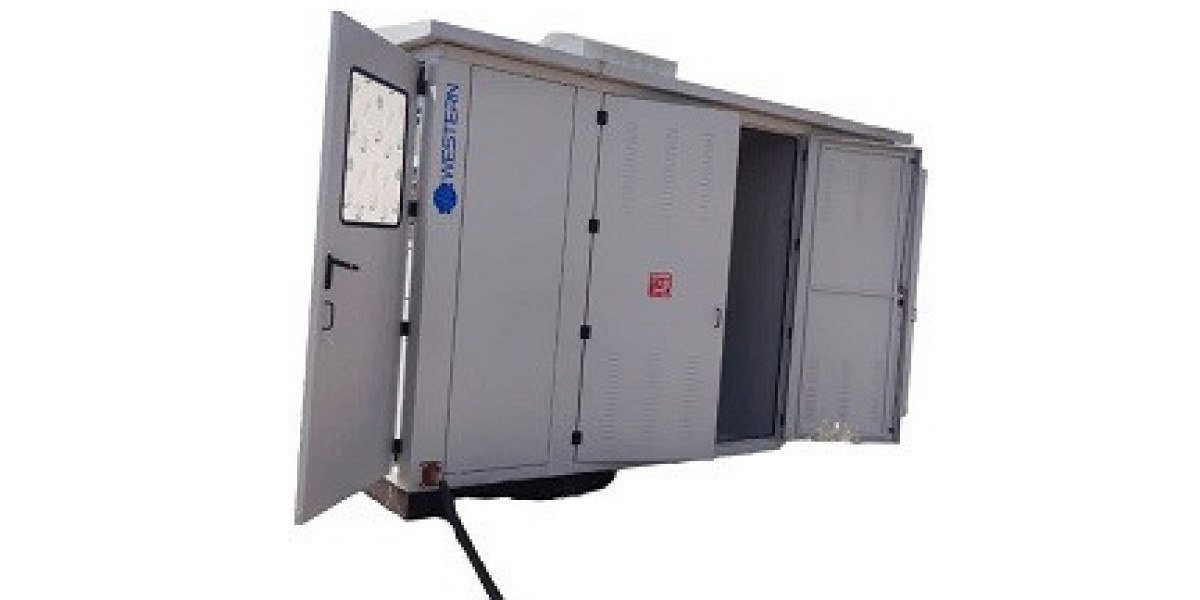![]()
Power outages can strike without warning, whether due to severe weather, natural disasters, or technical failures. When these incidents occur, the restoration of electricity becomes an urgent priority, particularly for critical services such as hospitals, water treatment plants, and communication networks. This is where Mobile Substation play a pivotal role in ensuring rapid and effective recovery of power supply. With the increasing need for flexibility, speed, and resilience in power systems, Mobile power unit have emerged as a game changer in emergency power restoration. Companies like Western Control Automation Pvt. Ltd. are leading the charge in providing advanced Mobile power unit solutions to enhance the reliability and speed of power restoration.
What Are Mobile Substation?
A Mobile Substation is a compact, transportable unit that provides the same functionality as a traditional, stationary substation. These units are designed to support the transmission and distribution of electricity temporarily. They can be quickly deployed to areas affected by power outages, providing immediate relief by restoring power in a matter of hours, rather than days or weeks. Mobile power unit are especially useful in emergency situations, where the traditional grid infrastructure has been damaged or is otherwise unavailable.
Typically mounted on trailers or in shipping containers, Mobile Substation consist of transformers, circuit breakers, switchgear, and protection and control equipment. They are capable of handling different voltage levels and can be adapted to various requirements depending on the needs of the region or facility.
Why Are Mobile Substations Important for Emergency Power Restoration?
- Rapid Deployment and Flexibility-One of the key advantages of Mobile power unit is their ability to be deployed quickly and efficiently. When an outage occurs due to a disaster or an unexpected failure, traditional substations may take several weeks or even months to repair, especially if the damage is extensive. A Mobile Substation, however, can be transported to the site within hours and installed with minimal downtime. This means that communities and businesses can begin the process of recovery without waiting for the full restoration of the grid.
- Backup for Critical Infrastructure- Mobile substation are crucial for ensuring that essential services remain operational during power outages. Hospitals, data centers, telecommunications, water treatment plants, and emergency response centers depend on continuous power supply. A Relocatable power facility can be quickly set up at these locations to provide backup power, preventing service disruption and ensuring that critical functions can continue uninterrupted.
- Cost-Effective Solution-Rebuilding or repairing a damaged substation can be a costly and time-consuming process. The construction of new substations, in particular, can take months and require substantial investments. In contrast, Mobile Substation offer a much more cost-effective alternative for restoring power during emergencies. Since they are portable and require fewer resources to install, they offer significant savings compared to permanent infrastructure repairs.
- Enhanced Reliability and Resilience-As the world faces increasing threats from climate change, including more frequent and severe weather events, the resilience of power systems is becoming more critical. A Mobile Substation can be part of a larger strategy to create a more robust and flexible grid. By having these units pre-positioned in vulnerable areas or ready for rapid deployment, power providers can ensure that they are better prepared for sudden disruptions, whether they come from storms, wildfires, or other hazards.
- Versatility and Customization-Relocatable power facility come in various sizes and configurations to meet different power demands. From small-scale applications, like providing power to a remote community, to large-scale implementations that can support entire industrial complexes, the versatility of Mobile Substation is one of their defining characteristics. Furthermore, they can be customized to meet specific local power requirements, including voltage levels and load capacity, ensuring a tailored approach to power restoration.
- Support for Grid Maintenance and Expansion-Transportable electrical station are not only beneficial during emergencies but can also be used for routine maintenance or upgrades to the existing grid. Power utilities can deploy them temporarily to allow for the maintenance of permanent substations without interrupting power supply. They can also be used to support grid expansion projects in growing urban areas, providing additional capacity during periods of high demand or when new infrastructure is being developed.
The Role of Mobile Substations in Disaster Response
Natural disasters, such as hurricanes, earthquakes, and floods, often lead to widespread power outages that can last for days or even weeks. In such cases, the rapid restoration of power is a top priority. Mobile Substation have become a vital tool for utility companies and emergency responders in disaster zones.
For instance, after Hurricane Katrina in 2005, the power infrastructure of New Orleans was devastated, and it took months to restore electricity to many parts of the city. In contrast, the use of Relocatable power facility after Hurricane Sandy in 2012 allowed for faster recovery in New York and New Jersey, with critical areas being powered within days. These units provided a temporary power solution until the main grid infrastructure could be repaired, minimizing the impact on residents and businesses.
Future Outlook: Innovations in Mobile Substations
The demand for Relocatable power facility is expected to grow as the need for reliable and resilient power systems increases. Advancements in technology are making Portable power station even more efficient and adaptable. For example, the integration of renewable energy sources such as solar or wind power into Portable power station can provide sustainable backup solutions in remote areas or during prolonged outages. Additionally, the use of digital monitoring and control systems is enhancing the management of Portable power station, allowing for real-time diagnostics and improved response times.
Moreover, with the increasing focus on decarbonization and energy transition, Transportable electrical station can play a role in integrating renewable energy into the grid. They can be used to connect decentralized renewable energy sources with the main grid, further enhancing the flexibility and sustainability of the energy system.
Conclusion
In conclusion, Mobile Substation are revolutionizing the way power restoration is handled during emergencies. Their ability to be rapidly deployed, support critical infrastructure, and provide a cost-effective, flexible solution makes them indispensable tools in today’s power grid management. As natural disasters and power disruptions continue to increase, Portable power station will remain a key component in ensuring reliable power restoration and enhancing the overall resilience of our energy systems. Whether for emergency situations or ongoing grid management, these mobile units are a true game changer in the world of power distribution.



